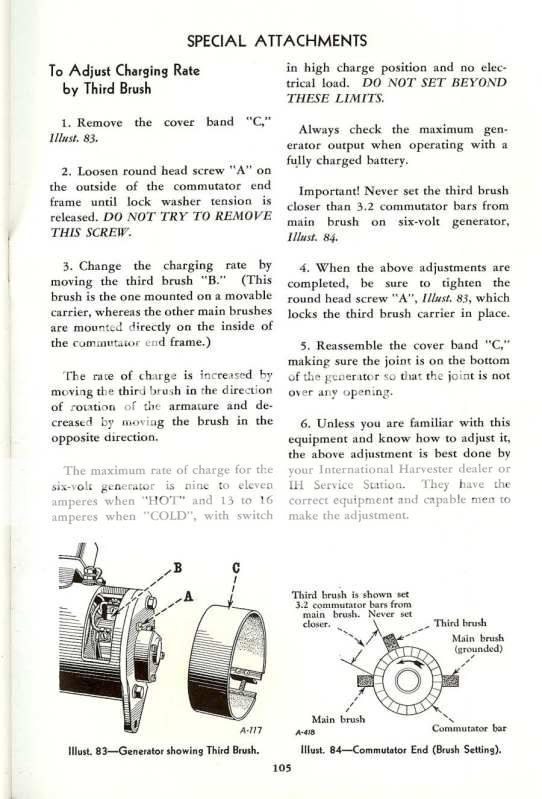Bill in IL
Well-known Member
Trying to get my generator to charge properly on a farmall M. I spent some time reading John T's troubleshooting guide and working with it last night. Is a 3 brush generator with a 4 terminal voltage regulator.
I show good charge on the ampmeter and voltage of 6.7 coming out of the generator with it running at half throttle. Problem really comes in when I turn on the lights. Then it cannot keep up and discharges system voltage drops to battery voltage (6.3) so it tells me the generator is working somewhat and the VR is working too. I just put new belts on 2 weeks ago and they are tight.
Why can I not get any more current out of this thing? I cleaned the commutator with 400 grit paper and brushes look in good shape. How does the 3rd brush affect charge output and how do you adjust it?
Should my lights be coming off the Load terminal on the VR and not off the Batt terminal as it is now?
I show good charge on the ampmeter and voltage of 6.7 coming out of the generator with it running at half throttle. Problem really comes in when I turn on the lights. Then it cannot keep up and discharges system voltage drops to battery voltage (6.3) so it tells me the generator is working somewhat and the VR is working too. I just put new belts on 2 weeks ago and they are tight.
Why can I not get any more current out of this thing? I cleaned the commutator with 400 grit paper and brushes look in good shape. How does the 3rd brush affect charge output and how do you adjust it?
Should my lights be coming off the Load terminal on the VR and not off the Batt terminal as it is now?



